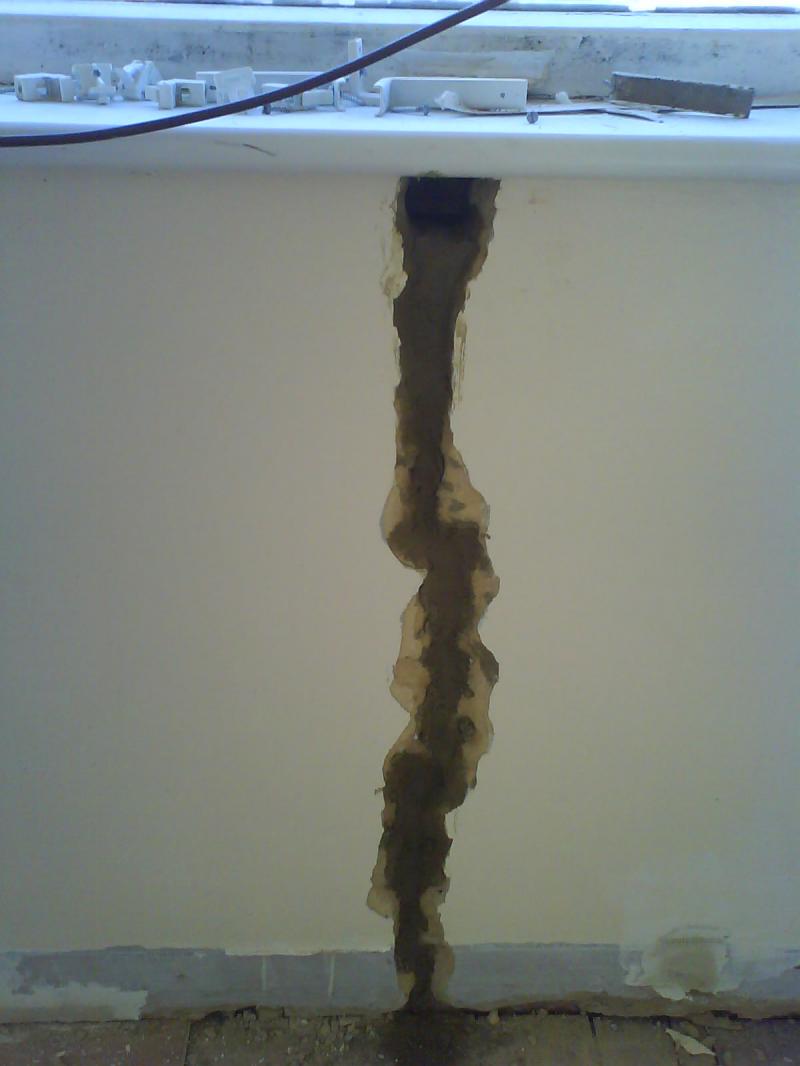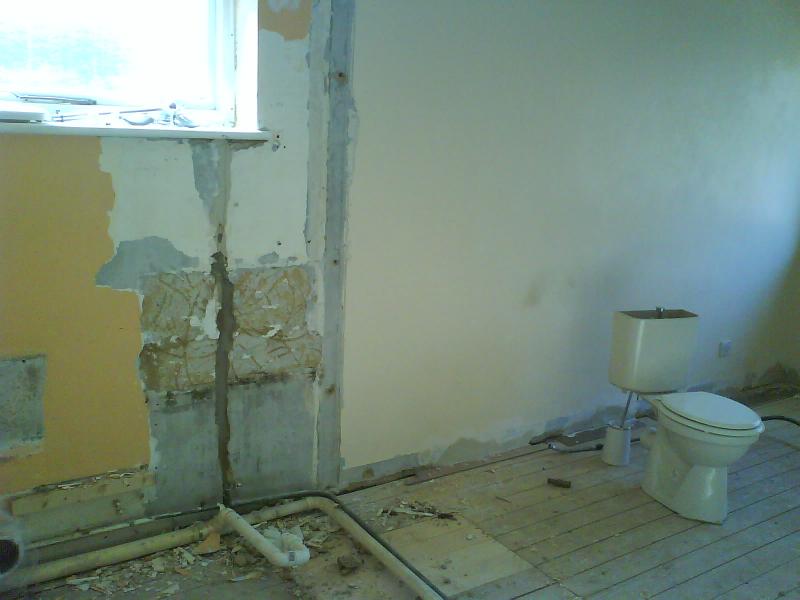Two walls exhibit vertical cracks on the inner leaf between windows on ground and first floor.
These are both mid-wall and do not extend above the top window or below the bottom window and there is no cracking outside. I hope they are just due to differential shrinkage. Once I'd removed the plaster, the crack in the 27' long wall was about 2mm wide and in the 12' short wall was about 1mm wide. As you can see, I have raked out the weak mortar, chipped away the broken edges of the blocks and replaced it with some 4:1 or 5:1.
These are both mid-wall and do not extend above the top window or below the bottom window and there is no cracking outside. I hope they are just due to differential shrinkage. Once I'd removed the plaster, the crack in the 27' long wall was about 2mm wide and in the 12' short wall was about 1mm wide. As you can see, I have raked out the weak mortar, chipped away the broken edges of the blocks and replaced it with some 4:1 or 5:1.



